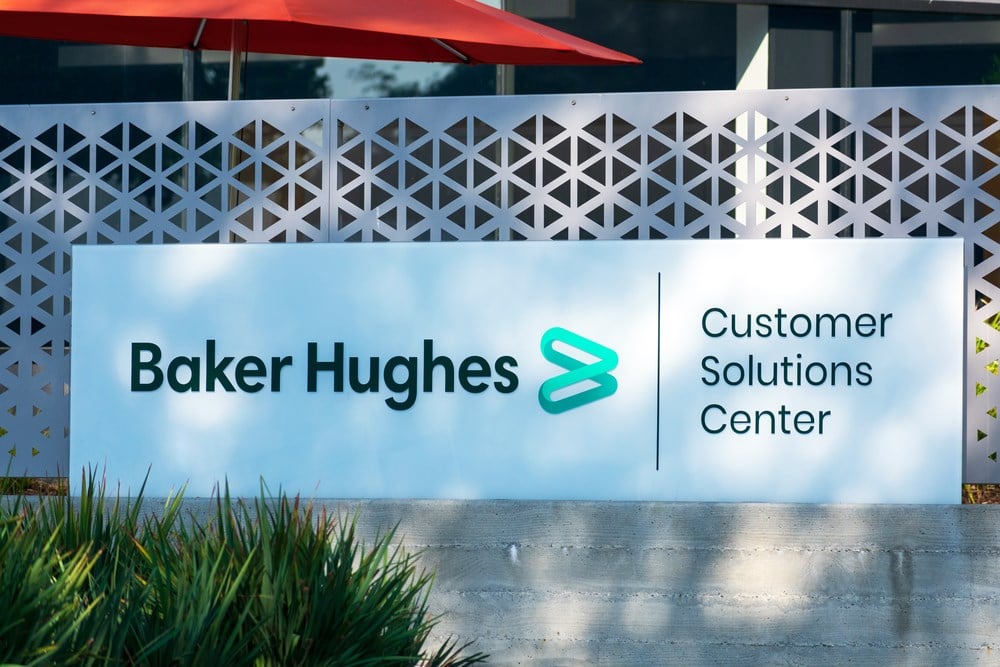
Baker Hughes Company (NASDAQ: BKR) beat on the top and bottom lines in its second-quarter earnings report on July 19. Earnings per share (EPS) of 39 cents on revenue of $6.32 billion was higher than analysts' expectations for EPS of 32 cents on revenue of $6.27 billion.
However, after initially surging 3.5%, BKR stock is pulling back and holding on to a gain of just over 1% in midday trading. Investors may be absorbing management's guidance, which was flat for the next quarter and the full year.
With the stock having climbed over 19% in the last month, BKR stock does look overvalued. Investors may want to wait for a pullback before taking a position.
The Oil Service Sector is Expanding
Companies that NASDAQ: BKR" target="_blank" rel="noopener">service the oil and gas sector grew faster than the broader energy sector. Some conditions weighing on oil prices remain, and the demand for renewable diesel is still strong.
Baker Hughes has increased its dividend in the last 12 months amid a share buyback program, a common practice among oil companies holding off drilling operations.
Nevertheless, Baker Hughes did report a 5% sequential gain and 13% year-over-year (YoY) gain in North American oilfield services revenue. The company also reported that orders for oilfield services and equipment rose 2% quarter-over-quarter and 24% YoY.
Baker Hughes is a significant player in the robust liquefied natural gas (LNG) market. Its company earnings report showed solid demand in Europe and Asia. The company is forecasting 65 tons per annum of final investment decisions (FIDs) in 2023, with a similar forecast for 2024 and beyond.
Higher Oil Prices Could be a Catalyst
Companies like Baker Hughes and its competitors like Halliburton Company (NYSE: HAL) and Schlumberger (NYSE: SLB) are sensitive to oil prices. This is where an opportunity could take shape.
The U.S. Energy Information Administration (EIA) projects the price of Brent Crude to rise to $81 a barrel by the end of 2023 and average $84 a barrel in 2024. While this is still substantially lower than the average of $102 in 2022, it's about a 10% increase from its current price.
Several factors could tilt the oil price significantly higher, reflected in the EIA guidance. Its oil forecast presumes tepid GDP growth of around 1.3% in 2024. However, that July estimate was revised to be higher than in June. While it's fair to say that a range of options is possible for the economy, the current trend is far more bullish than some economists expect.
Analysts Remain Bullish on BKR Stock
According to the Baker Hughes analyst ratings on MarketBeat, both Capital One Financial Corporation (NYSE: COF) and Bank of America (NYSE: BAC) initiated coverage on Baker Hughes at the beginning of June. The former gave the company an "overweight" rating with a price target of $38. The latter gave BKR stock a "buy" rating. No price target was immediately given.
The consensus rating for Baker Hughes from 18 analysts tracked by MarketBeat gives the stock a "moderate buy" rating with a price target of $35.95. That's only about 1.6% higher than its current price.
However, analysts tend to update their ratings around earnings. Investors should pay close attention to what analysts report in the coming weeks for clues on the short-term outlook for BKR stock.
In the meantime, Baker Hughes stock has a forward P/E ratio of 23x and a share price near a 52-week high. If it can push past the current level of resistance, the stock could test a price around $43, which is the high target of analysts. But without confirmation, you'll want to wait for a pullback to around $30 before taking a position in BKR stock.





